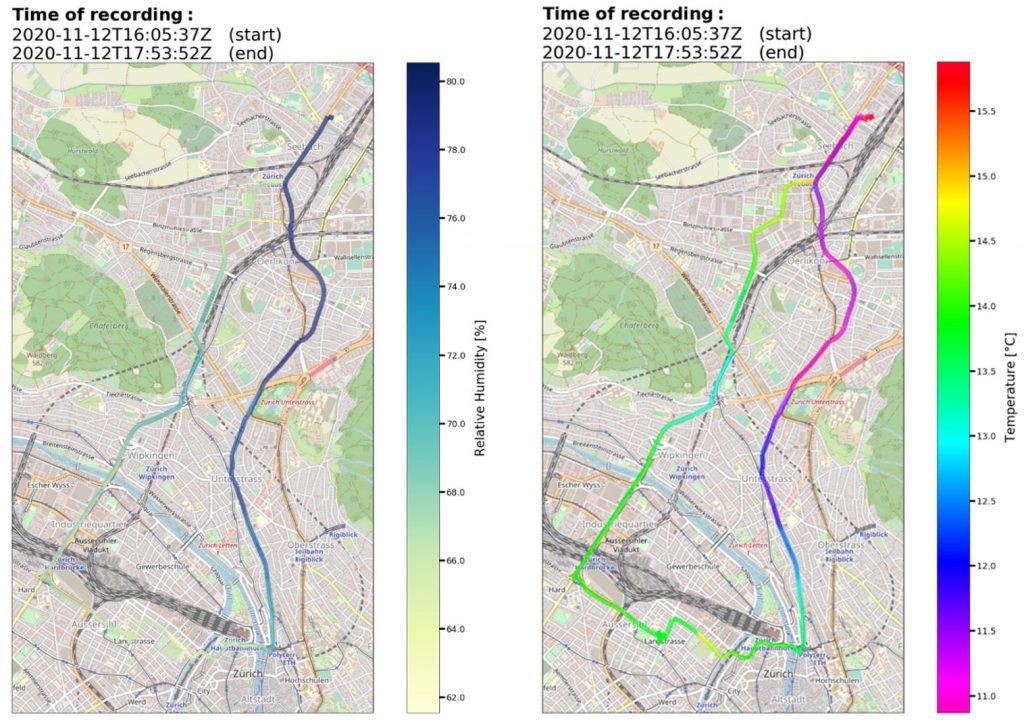Navigation menu
- Education
- Emissions & Air Quality
- Infrastructure & Services
- Meteorology & Climate
- News
- Physical Chemistry
- Projects
- The Team
Guest post of our two Bachelor students Soneesh Gill and Manuel Walter
The study of urban heat islands becomes more and more important, especially when considering the ongoing climate change. To keep urban regions habitable in the future, city planning measures must be taken. To achieve their greatest benefit, measures such as the greening of urban districts or the construction of fountains and other water features must be placed at appropriate locations.
Most conventional measuring devices used to detect urban heat islands are stationary in-situ sensors. The Zurich University of Applied Sciences (ZHAW) also operates such a network of nearly 300 sensors in the city of Zurich. However, in order to close data gaps and to be able to make statements about the entire urban area, a mobile temperature and humidity measuring device is helpful.
This is where our bachelor’s thesis should generate an additional value: In a first phase, a prototype of a mobile measuring device has been developed. In the current phase, this prototype will be placed on PubliBike e-bikes and will collect data throughout the city of Zurich. The measuring device records not only temperature and humidity values, but also assigns GPS location data to each measurement. This allows to display the prevailing temperature and humidity on a map (Fig.1).

Respecting the privacy of PubliBike cyclists is of great concern to us. Therefore, we made sure that the meteorological data and the riders’ data are stored within two physically separated systems, making any meteorological measurement entirely anonymous.
In the future, the goal is to draw meaningful conclusions from collected data and therefore help decide on city planning measures. To achieve this goal, the developed device must be continuously improved and a large number of PubliBikes shall be equipped with the measuring device. In addition to temperature and humidity logging, the functions of the device could also be expanded in the future, allowing the monitoring of values such as carbon dioxide levels or particulate matter concentration.